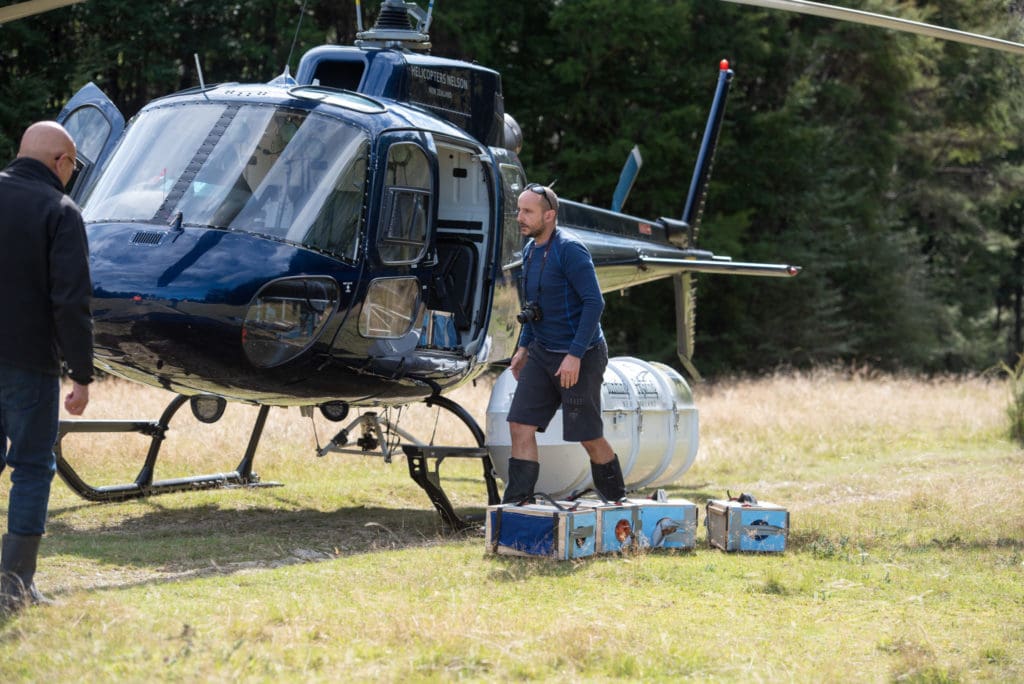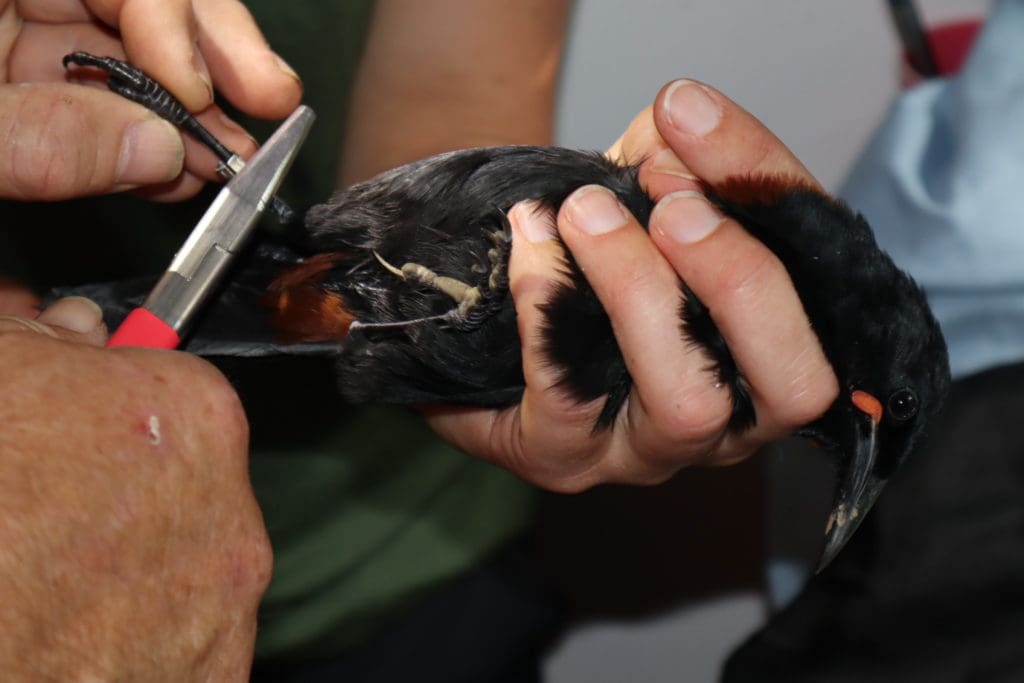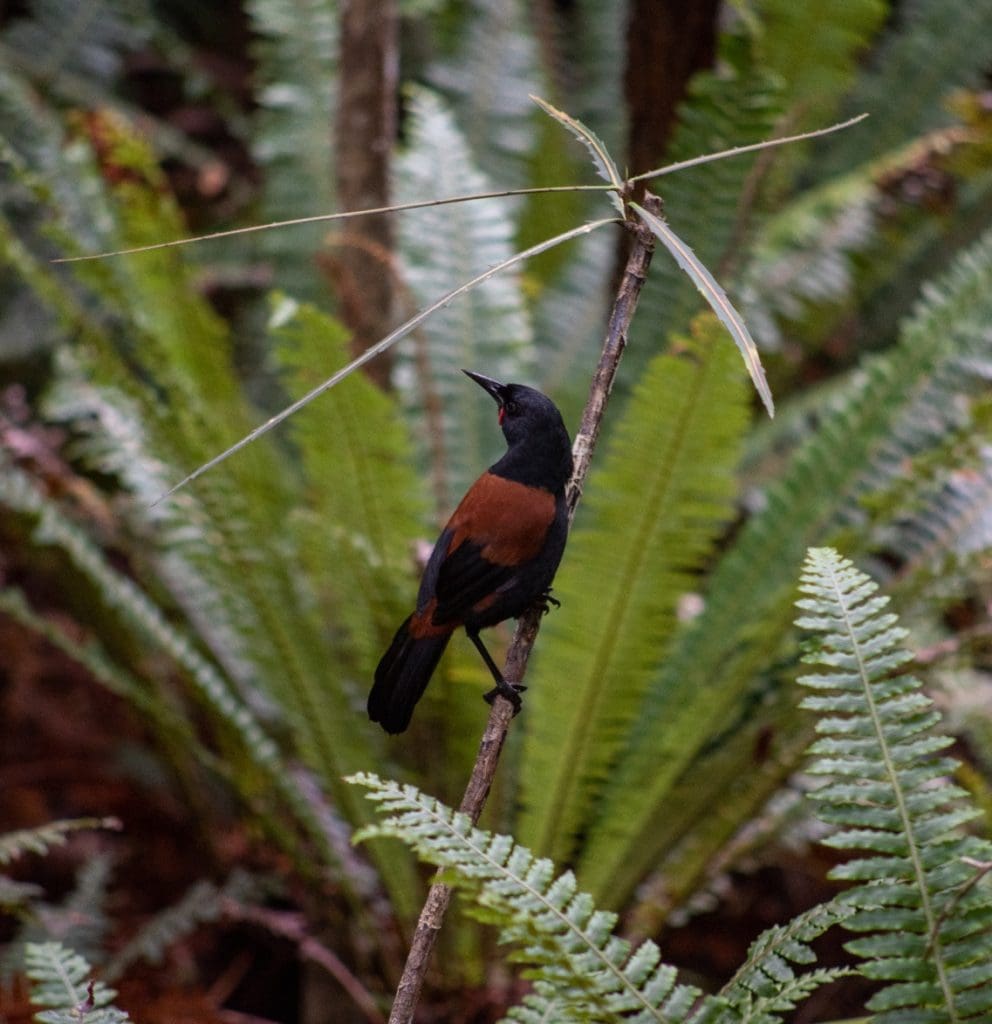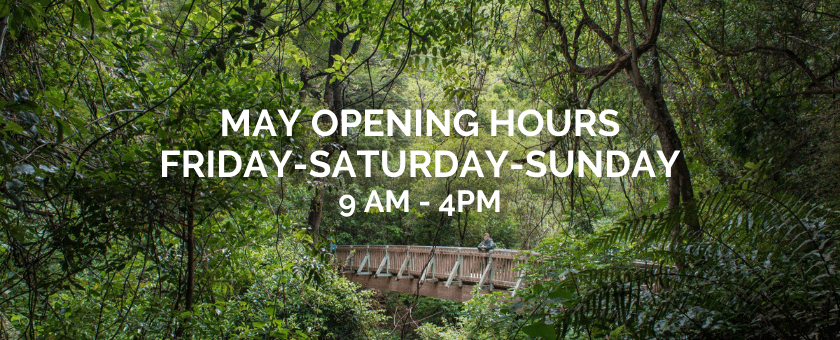Nelson Sanctuary Welcomes Back Tīeke
A historic moment for conservation in Nelson Tasman happened last month with the release of 40 tīeke (South Island Saddleback) into the Brook Waimārama Sanctuary.
Tīeke were rescued from the verge of total extinction in 1964, when 36 birds were removed from Taukihepa (Big South Cape Island) off the south coast of Stewart Island after the island was invaded by rats.
The birds released last month into the Nelson sanctuary were descendants from that remnant population.
The translocation required the tīeke be captured on Motuara Island in the Queen Charlotte Sound, moved by boat to Ship Cove and then by helicopter to a remote part of the Sanctuary for release.

Representatives from Nelson City Council including Mayor Rachel Reese and Councilors Kate Fulton and Brian McGurk, iwi representatives including kaumatua and rangatira from Te Atiawa, Ngati Kuia, Ngati Tama and Ngati Koata, DOC officials, and long-standing volunteers and staff of the Sanctuary were part of the release ceremony.
This first species reintroduction for the Sanctuary is highly significant, marking the culmination of almost two decades of hard work by dedicated volunteers and staff, says Sanctuary chief executive Ru Collin. The translocation of tīeke into the fully-fenced haven signals the beginning of a new phase for the Sanctuary, which is the South Island’s largest predator-free, fenced Sanctuary and the second largest in New Zealand. It is located just 15 minutes from of Nelson’s CBD.
The 14.4km of pest fence allows species such as tīeke to survive and thrive, without the presence of rats, cats, weasels and stoats which have led to their complete demise in all other mainland areas.

“Not only is the release very important for the Sanctuary, but it is also nationally significant, as the offshore
populations are reaching capacity in those environments, and there are no other mainland South Island populations of tīeke currently. With our nearly 700 hectares of land for these birds to spread out in, there is
plenty of room for them to increase in numbers once again,” said Collin.

“Tīeke numbers will be monitored from now on – we’ve developed an app for reporting sightings – and it is hoped that they will have formed breeding pairs by the time breeding season starts in September. They are a delightful, ground-dwelling bird and once established – hopefully in a few years – we know our visitors will enjoy them.”


This Post Has 0 Comments